Many visitors to the Cotswolds have the Roman Baths at Bath on their must-see list. But did you know that the whole area is dotted with Roman remains? Villas, forts, roads, temples – even the occasional amphitheatre! Gloucestershire and the Cotswolds are particularly rich in Roman relics, and both Gloucester and Cirencester were important towns in Roman Britain. But the 2,000 years since the Romans arrived have seen many of the buildings and other artifacts lost to history; some have been buried, destroyed or damaged, or had parts removed to museums. Others are on private land with no public access. However, if you want to get a flavour of Roman life in this area, we’ve put together a list of the best Roman sites to visit in the Cotswolds and Gloucestershire here:
Corinium Museum
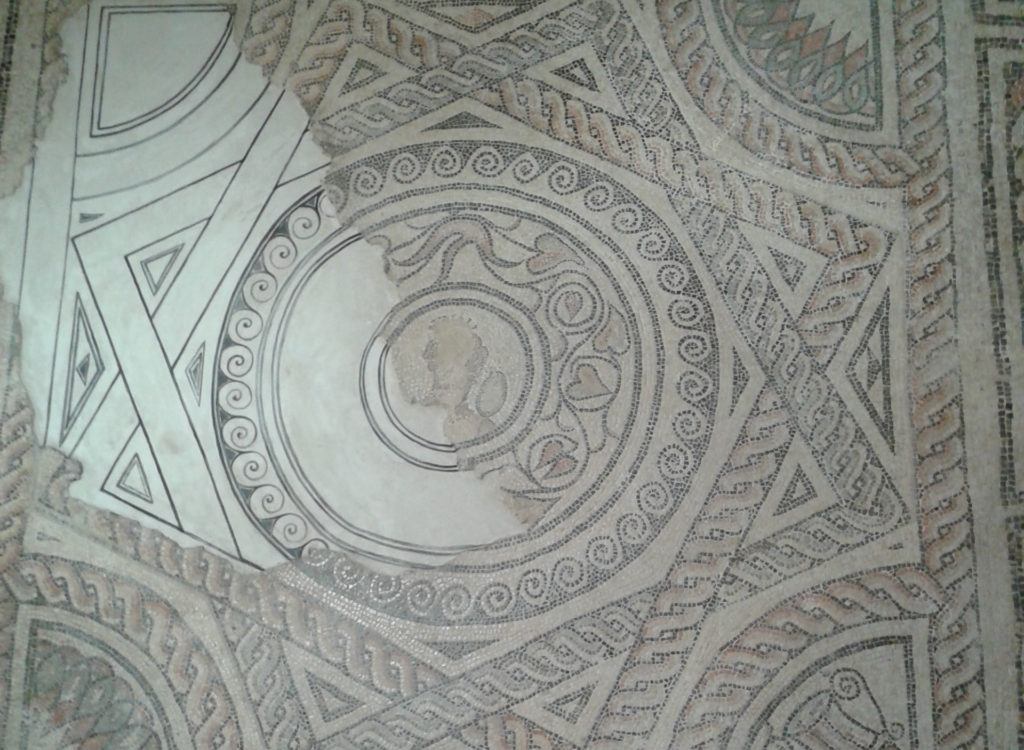
Why not start with one of the best, most comprehensive and interesting collections of Roman artifacts in the UK at the Corinium Museum in Cirencester? (The Roman name for Cirencester was Corinium, and it was one of the early capitals of Roman Britain.)
There are fantastic floor mosaics on display, all discovered in and around Cirencester, plus a very informative and interactive exhibit about everyday Roman life. One of the most unusual displays is of Roman tombstones!
It’s quite a compact museum – you can go through in a couple of hours. If you have children with you there are some dress-up items and opportunities to try playing Roman games. The museum shop is small but full of interesting things including pocket-money souvenirs. Last point to note: there’s no cafe, but you’re in the heart of Cirencester so you’ll find numerous eating places nearby.
Cirencester Amphitheatre
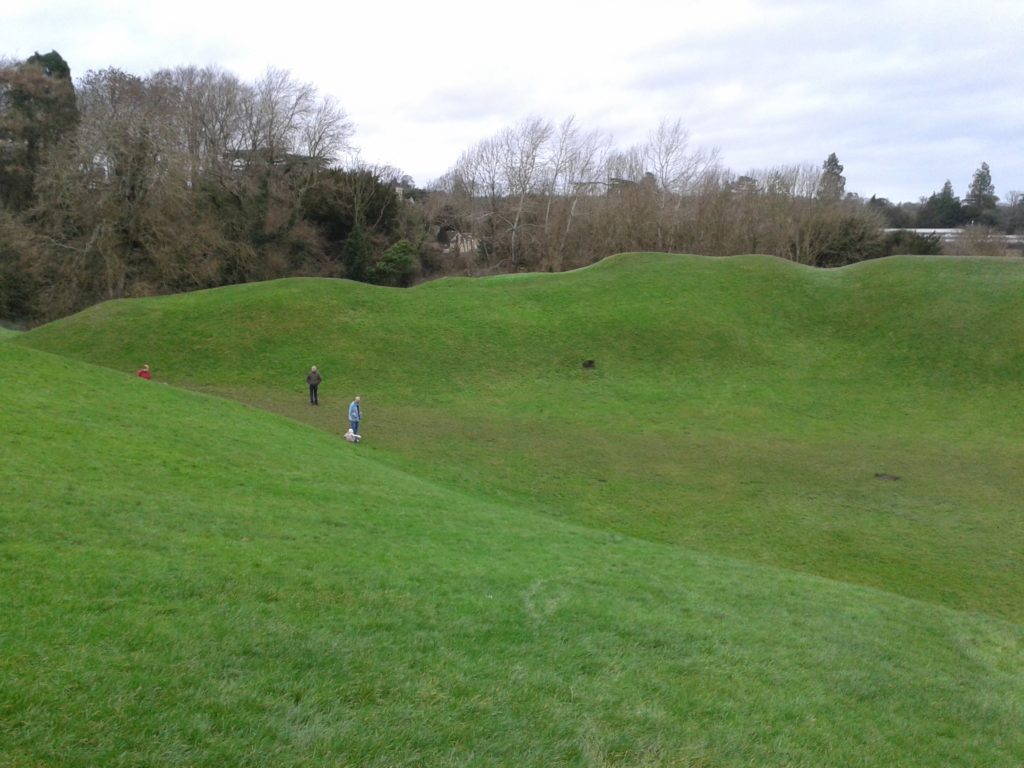
Ideally you might add your visit to Cirencester’s Roman amphitheatre on to your trip to the Corinium Museum. It’s a short drive from the centre of town, in a residential area. If you’ve got visions of the Colosseum in your head, think again – this site is a major earthwork rather than a building; the stone for the terraced seating was robbed out hundreds of years ago. However, in its heyday, this was one of the largest amphitheatres in Britain and held around 8,000 seated and standing spectators.
It’s free to enter and parking is on the quiet residential street nearby. Children love running up and down the hillocks and log-rolling down the slopes! However it can get muddy in the winter and isn’t suitable for wheelchairs.
The Roman Baths at Bath
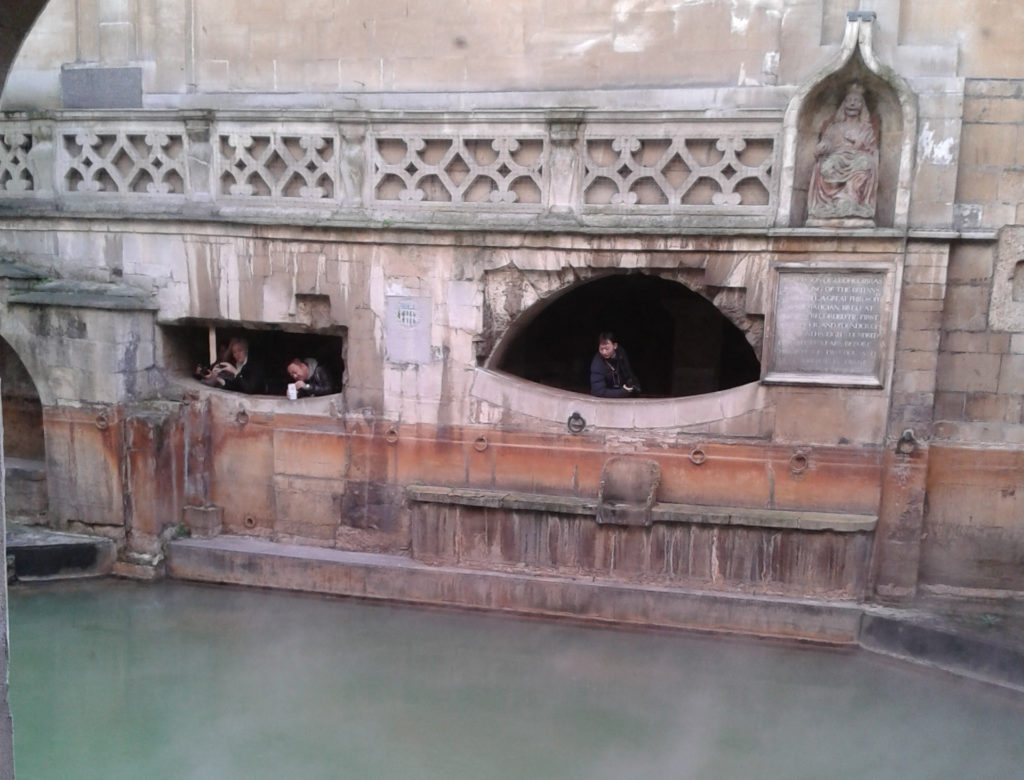
Of course one of the best Roman sites to visit in the Cotswolds, and arguably the most spectacular Roman destination in the UK, is the Roman Baths in the City of Bath. This is one of the most popular tourist attractions in the country so be prepared to join the crowds. It’s quite pricey at £21 for an adult weekday ticket, but it really is a unique destination – indeed it forms an essential part of the City’s designation as a UNESCO World Heritage Site.
The local Celtic people used the thermal spring to worship the goddess Sulis before the Romans came. After the invasion 2,000 years ago the Romans used it for bathing and built a settlement known as Aquae Sulis. As you walk round the site you can trace the history of the baths’ use from Roman times through to the Victorian period. As well as the baths themselves, original Roman pavements survive, along with parts of the ruined temple and a large collection of curse tablets. There is an impressive audiovisual presentation and you will learn surprising facts about Roman life.
Bathing in the spring waters is no longer allowed, so don’t bring your swimming costume! However you can still try drinking the spa water from either the fountain in the west baths, or the pump room above – just don’t expect it to be sweet and pleasant!
Chedworth Roman Villa
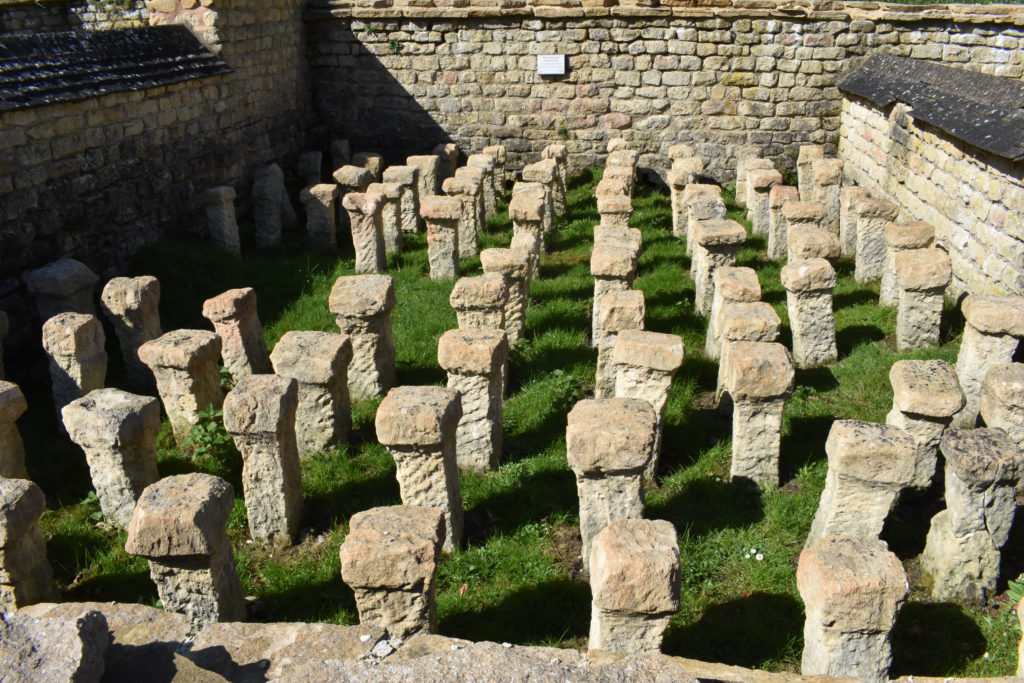
Located in a tranquil Cotswold valley, Chedworth Roman Villa is the best example of a Roman villa to visit in the Cotswolds and Gloucestershire. It was one of the largest and grandest villas built during the Roman occupation of Britain. Managed by the National Trust, the site is still undergoing excavation and conservation work.
The foundations of the original buildings are still present for you to explore; look for the nymphaeum capturing a natural spring. Known for its magnificent mosaic floors, this villa also had luxurious flushing toilets – unusual in a private residence, indicating the wealth of its owners.
Children visiting Chedworth can dress up as Romans and play games, and there’s lots of space to run around. There’s a cafe and shop in the visitor centre, and a lodge built on-site during Victorian times houses a small museum. Look out for large Roman snails, the descendents of the original specimens brought by the Romans to Britain as food!
Great Witcombe Roman Villa
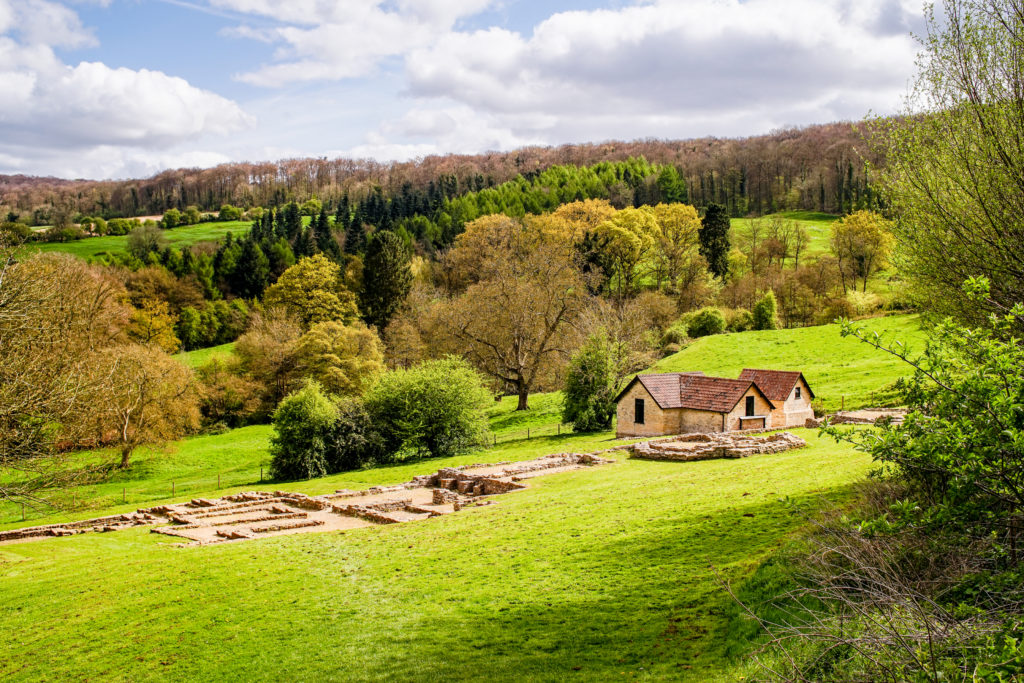
You can find the remains of another large Roman villa at Great Witcombe, near Gloucester. The foundations, originally excavated in the 1800s, are exposed so you can walk around the entire villa plan. A building on site preserves mosaics discovered during those excavations; but, sadly, there is no public access to them due to their fragility.
Great Witcombe Roman Villa is free to visit, although there is a small charge for the car park. Situated on a gentle valley slope near a spring, it is a pleasant place to spend a sunny hour. Note there are no facilities on site and it is not suitable for wheelchairs.
North Leigh Roman Villa
Another large excavated villa is located at North Leigh, close to Blenheim Palace in the east of the Cotswolds. This villa was extended and re-developed over a period of about 300 years before being abandoned in the 5th century AD.
You can view an almost complete mosaic floor on display in a separate building on site. Entry is free; access to the site is via a farm track which can get muddy; there are no facilities on site.
Gloucester City
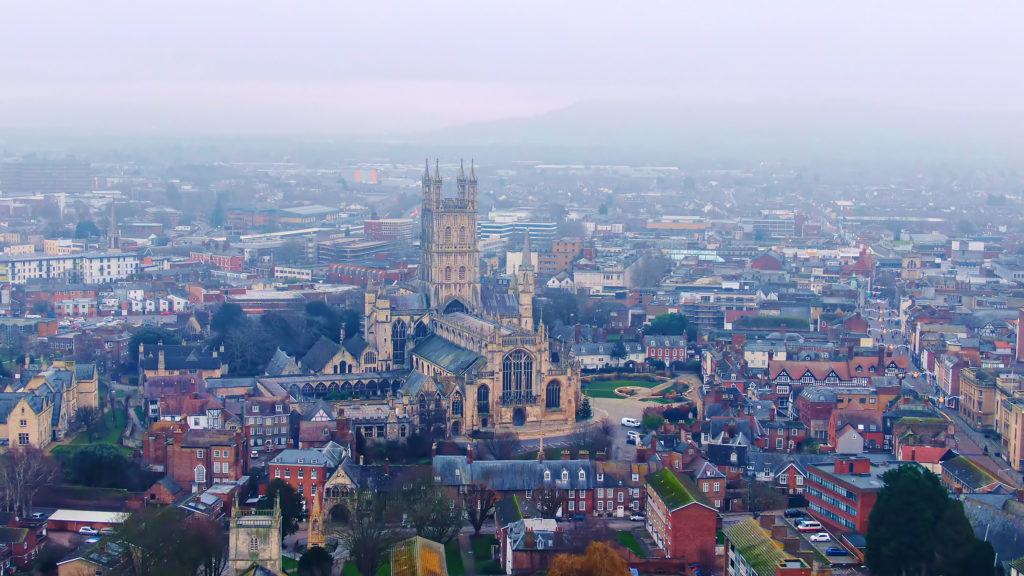
The Romans founded a fort at Gloucester (known as Glevum) within 25 years of the invasion of Britain. It was laid out on the usual plan, with an East Gate, South Gate, West Gate and North Gate. Walk into the town centre and you’ll see the street layout persisting to this day.
Just outside Boots on Eastgate Street there are glass panels in the pavement; here you can look down on the remains of the Roman city wall and later mediaeval tower. Tours are available: check days and times with Gloucester Museum (01452 396131) or the Tourist Information Service (01452 396572). Gloucester Museum itself has many Roman artifacts, as well as a variety of other interesting and hands-on displays for children.
From April to August, Gloucester Civic Trust (01452 526 955) offers guided tours of the King’s Walk Bastion, which is another part of the Roman east wall. Tours are £5 per adult, with accompanied children under 16 going free.
Lydney Park Roman Camp
Across the other side of the Severn Valley, on the edge of the Forest of Dean, is Lydney Park Estate. This is a private residence which opens its gardens to visitors in spring and on selected days as part of the National Garden Scheme.
The remains of a 1st century AD Roman camp, temple and bathhouse complex have been excavated within the grounds. This is the best example of a Roman temple site open to visit in Gloucestershire. You can walk round the remains as part of your visit to the gardens, which are extensive. There is also a small museum highlighting some of the archaeological finds from the site – which amongst other things included mosaic floors, over 8,000 coins and a cast bronze sculpture of a dog.
The Scowles of the Forest of Dean
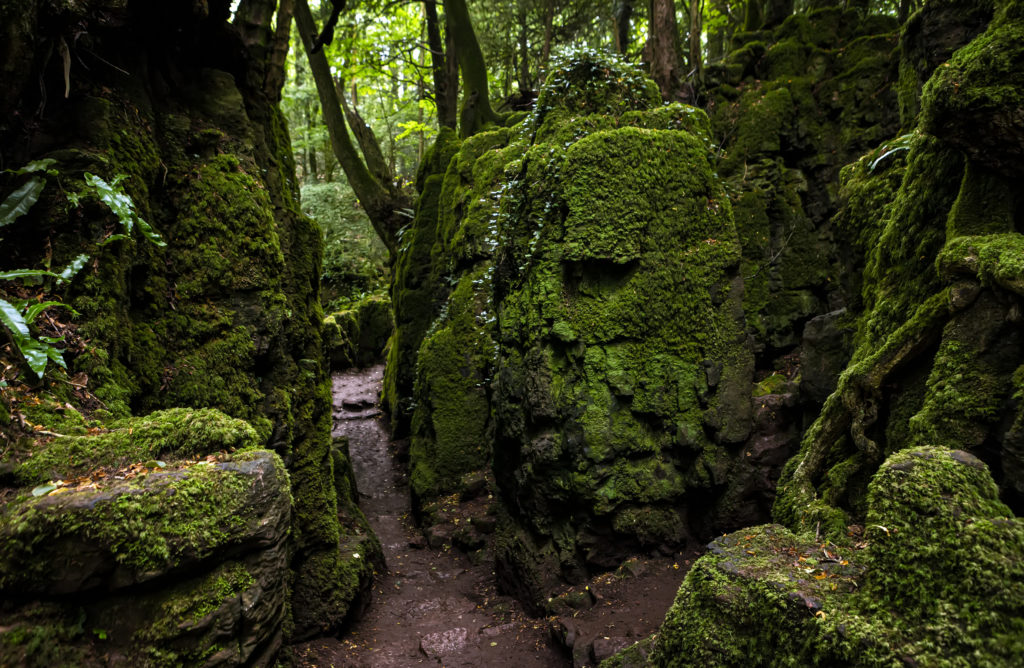
The scowles are a series of strange rock formations, hollows and caves in the Forest of Dean in the west of Gloucestershire. They are a weathering exposed cave system and were important to Iron Age people and the Romans for iron ore extraction, the ore being close to the surface. The best places to visit them are near Coleford: Puzzlewood, where in 1848, workers found a hoard of 3,000 Roman coins, and Stock Wood Scowles, known as Secret Forest, where replica Iron Age roundhouses have been built. Both are interesting and certainly atmospheric places to visit!
These attractions are not suitable for wheelchairs or children’s buggies due to the ground conditions; stout footwear is recommended. Puzzlewood is open daily in the summer, selected days in the winter; adults £7, children (aged 3-16) £6. Secret Forest is only open on selected days and, being off-grid, only accept cash: adults £5, children £3.
Roman Roads
Some of the roads you’ll travel on between towns in Gloucestershire and the Cotswolds are actually Roman in origin. Many Roman roads survive because of the way they were constructed: raised up above the surrounding land using material dug from ditches alongside. If you’re driving along a straight section of road for any distance, there’s a good chance it is Roman; the roads were constructed along sight lines from one landmark to another.
Three major Roman roads converged on Cirencester (Corinium): the Fosse Way, Ermin Street and Akeman Street. Only the Fosse Way and Ermin Street have become part of our modern main road network. Look out for the long, straight stretches on the A429 (Fosse Way) north-east out of Cirencester going to the tourist towns of Bourton-on-the-Water, Stow-on-the-Wold and Moreton-in-Marsh.
Copyright © Amatis Investments Ltd 2019 -2024
